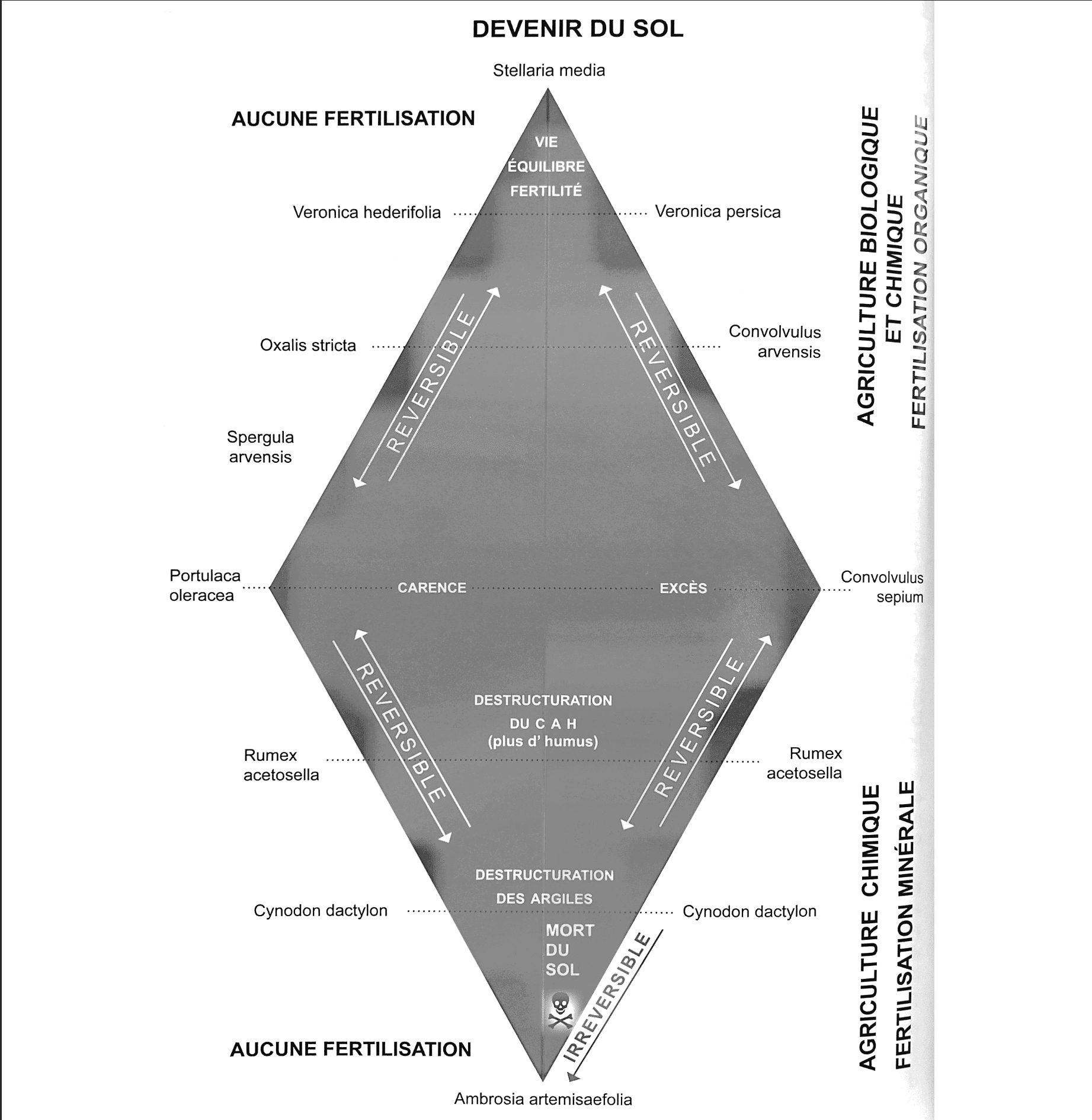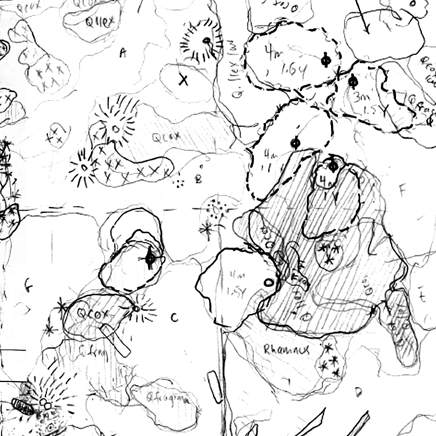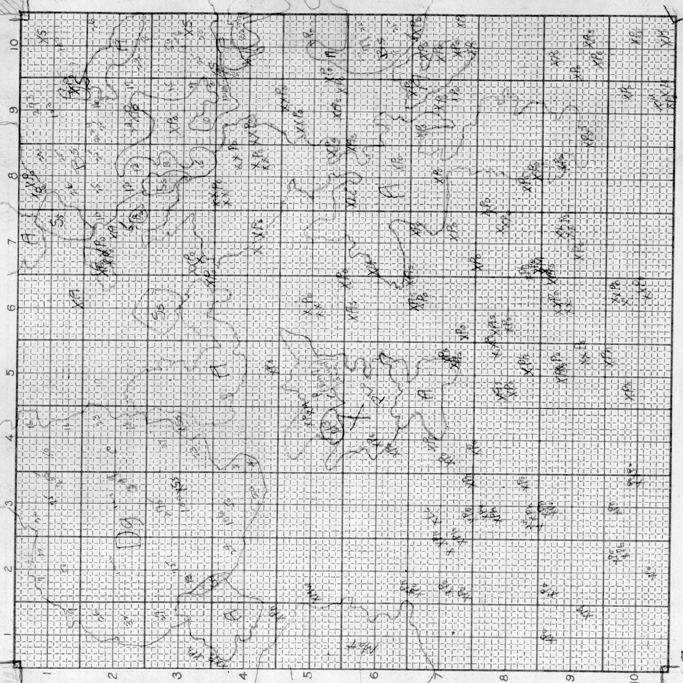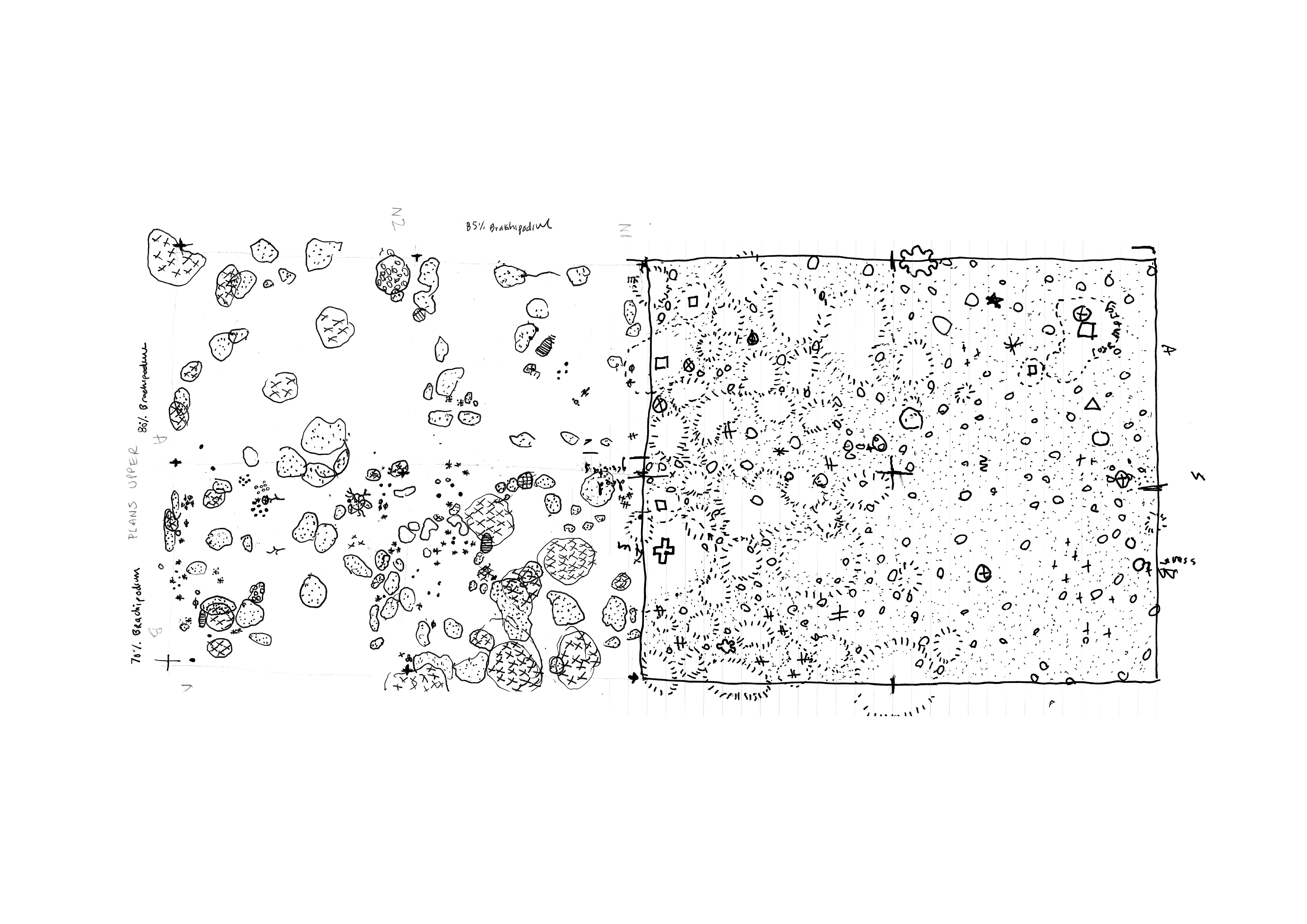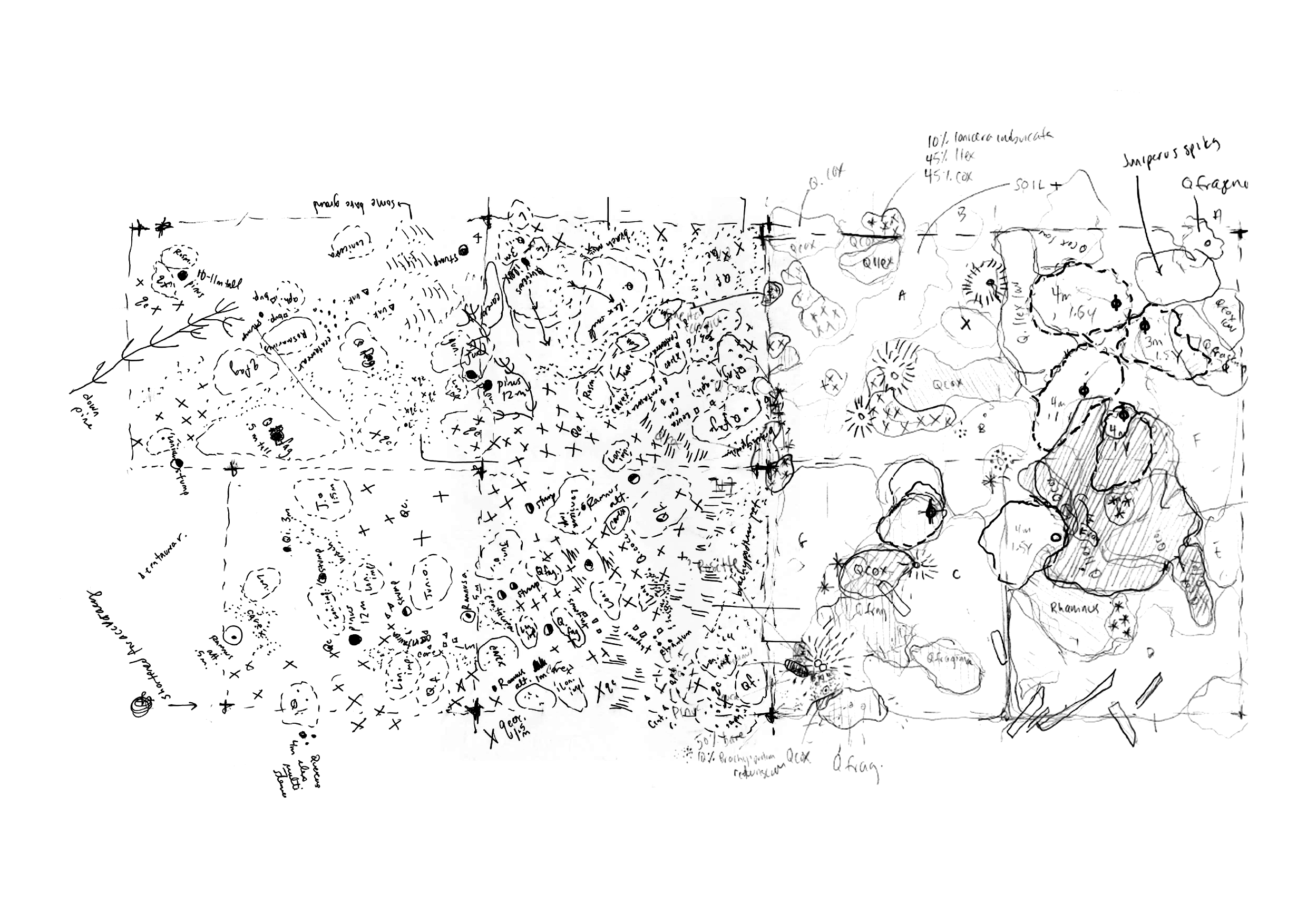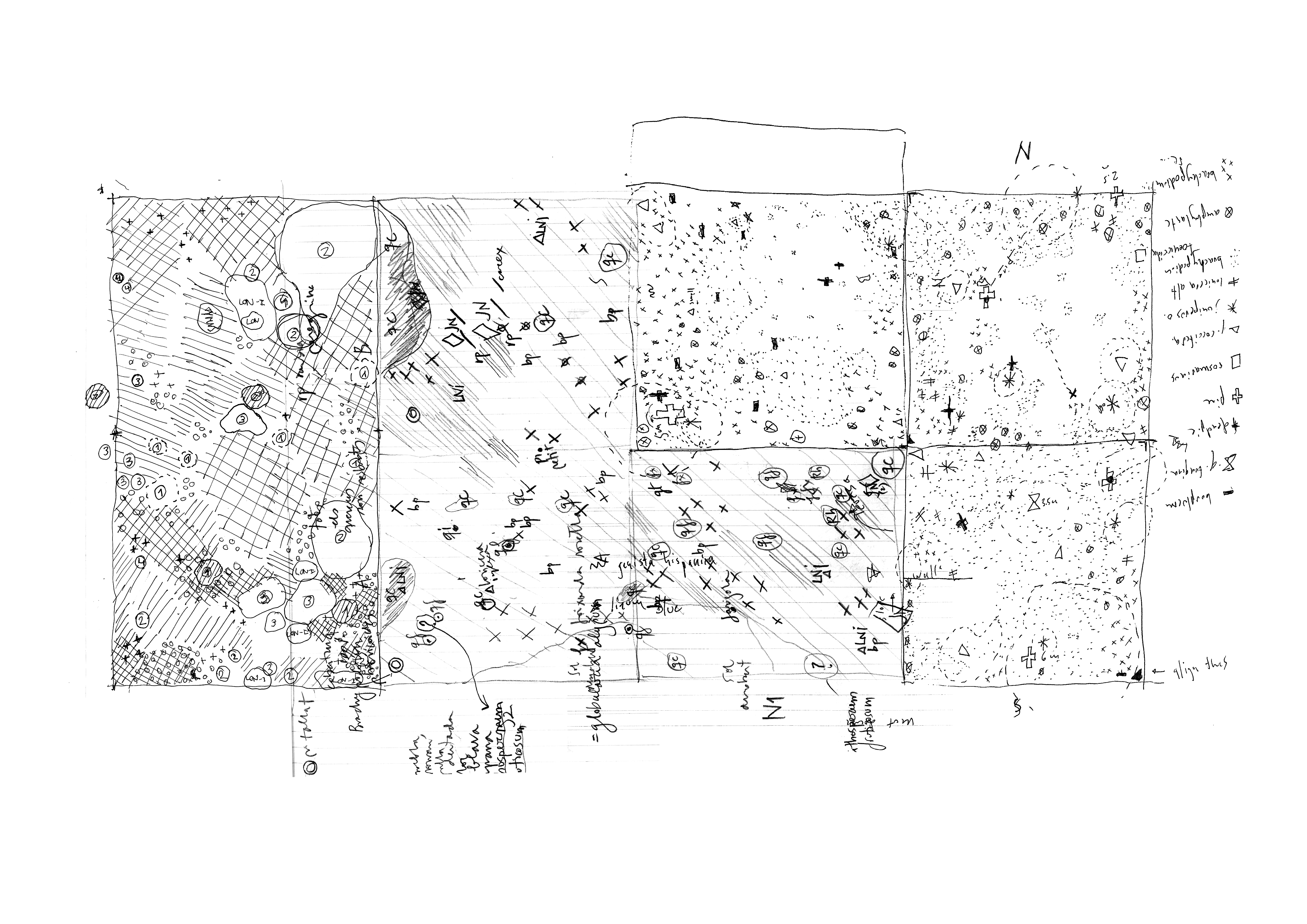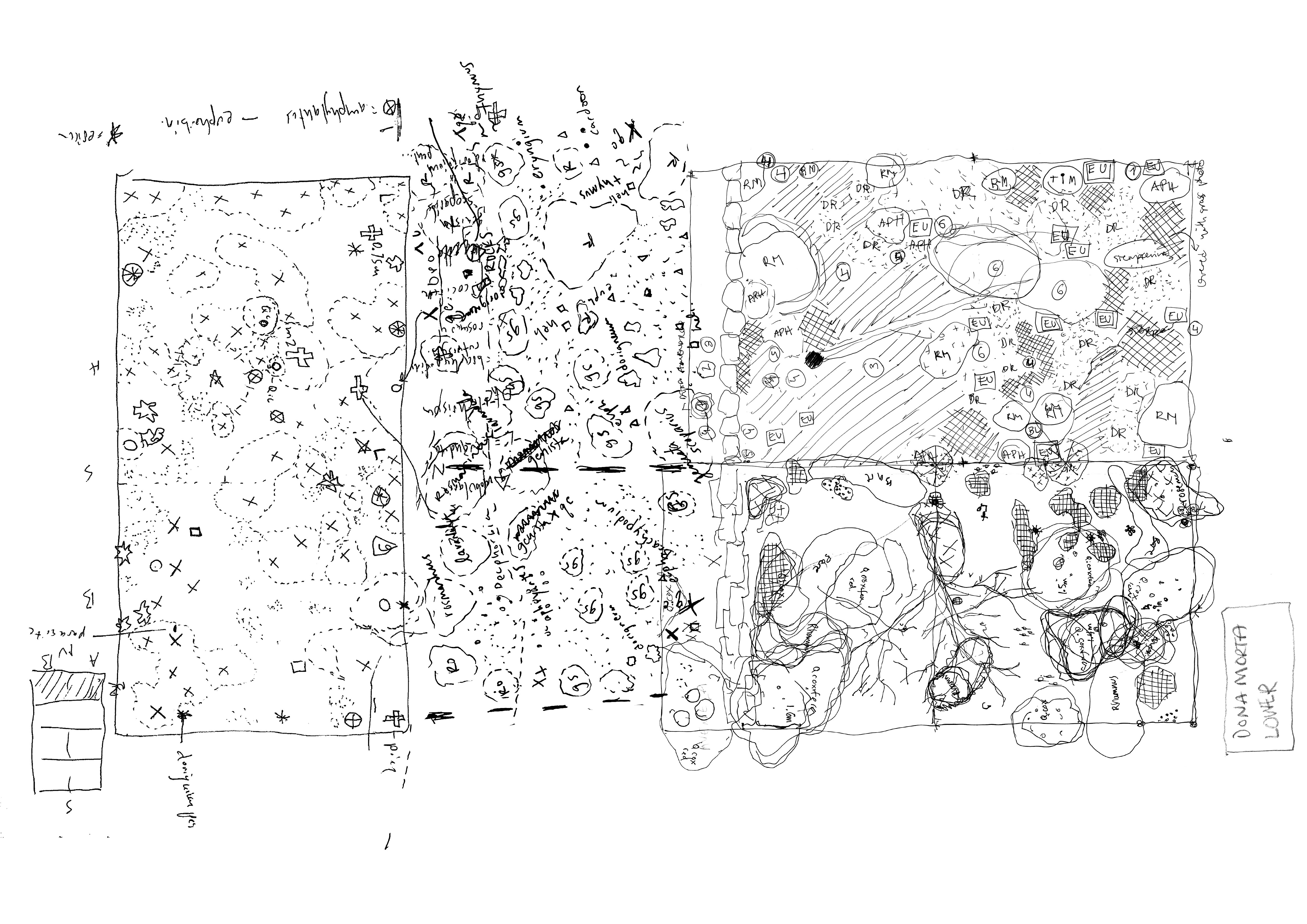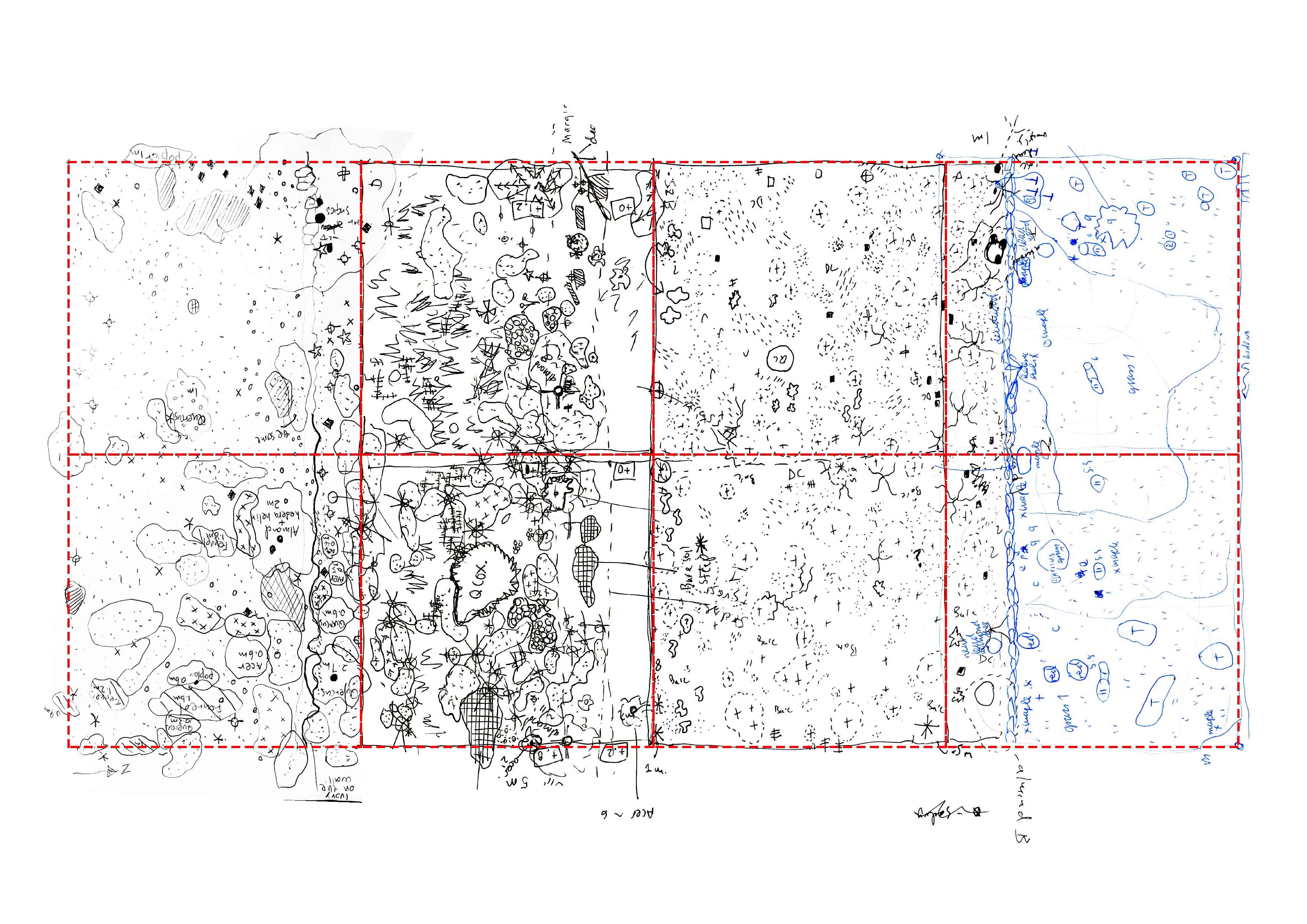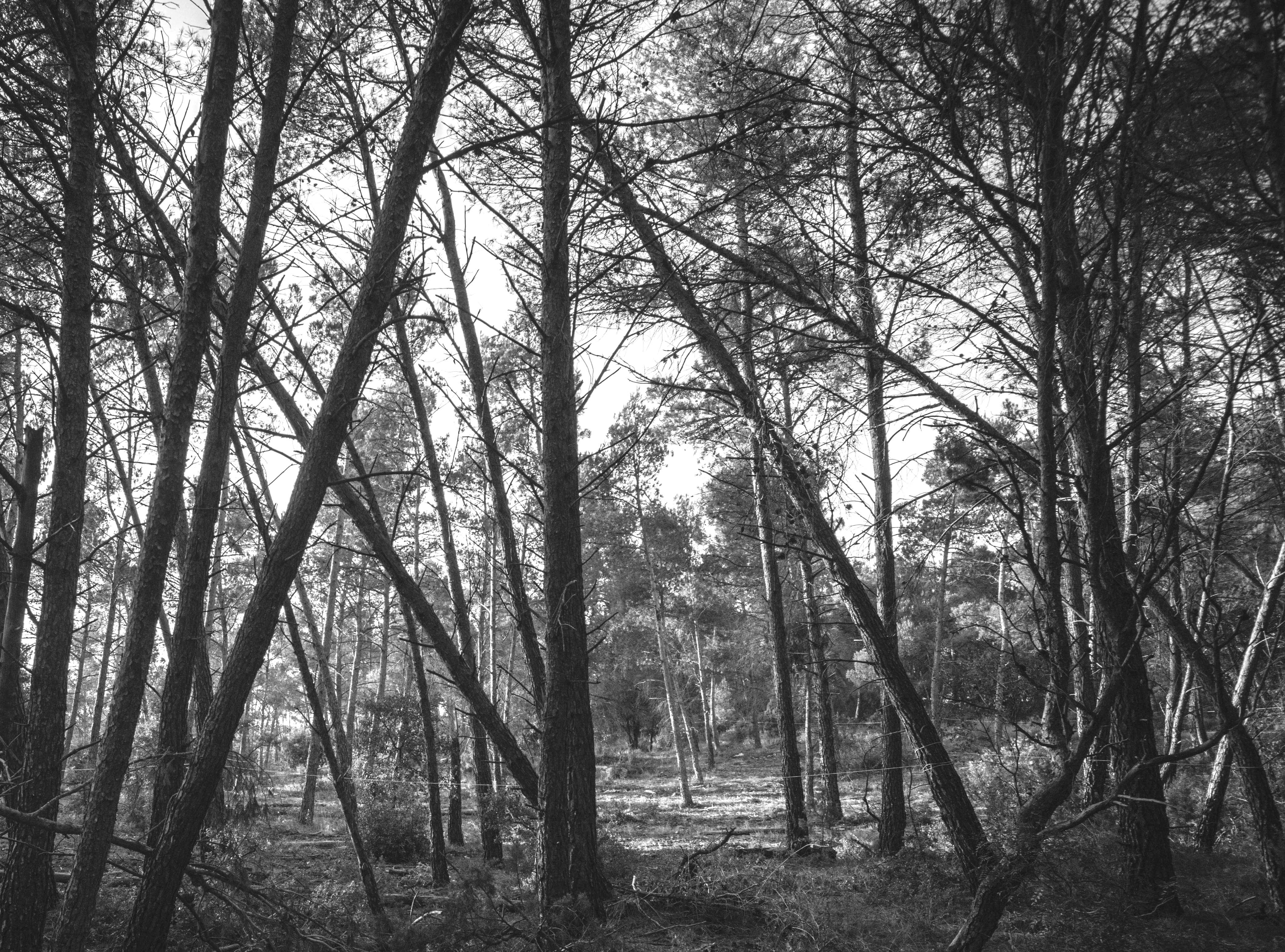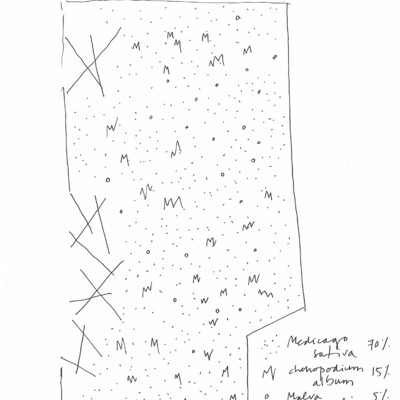
Bioindicator Plants: Foraster
On the 2nd of October of 2022 we conducted a survey of bioindicator plants for our research plot Foraster in Senan, together with the local botanist Francesc Balanzó.
Soils are a storage of seeds awaiting the perfect conditions to germinate, a process that can be triggered by different factors such as a change in the climatic conditions, or a disturbance made by humans or other animals. By identifying the most significative plant species that have grown spontaneously in a plot, we can reveal the invisible characteristics of the soil, such as its mineral composition, a lack of air due to compaction, the presence or absence of organic matter, and more.
As the appearance of a same species can have different associated factors depending on the climate, to conduct this survey we used the guide Les plantes bioindicadores from Gérard Durcef, which is specialised in Mediterranean bioindicator flora.
Firstly, we selected 5 plots in the area which have a more or less homogeneous distribution of plant species. The goal of a vegetation survey directed to this methodology is not to identify every single individual but to define which are the most representative species and its grade of coverage in the area, from 1 to 5 depending on the percentage. In the case of these plots, the most present species were Medicago sativa, Carduncellus caeruleus, and Diplotaxis erucoides amongst others.
The conclusions drawn after analysing the presence and meaning of the list of plants show a general condition of soils with active calcium, which relate to a PH over 7; a general condition of high soil compaction, specially notable in the plot 2; an excess of Nitrites, specially those from animal origin; low soil retention capacity due to the lack of clay and/or humus; highly mineral soils; the blockage of Phosphorus; and a blocked biological activity that leads to a low mineralisation of organic matter.











